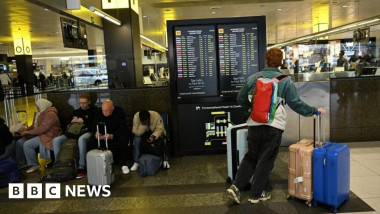CrowdStrike IT outage affected 8.5 million Windows devices, Microsoft says
Microsoft says it estimates that 8.5m computers around the world were disabled by the global IT outage.
It’s the first time a figure has been put on the incident and suggests it could be the worst cyber event in history.
The glitch came from a security company called CrowdStrike which sent out a corrupted software update to its huge number of customers.
Microsoft, which is helping customers recover said in a blog post: “We currently estimate that CrowdStrike’s update affected 8.5 million Windows devices.”
